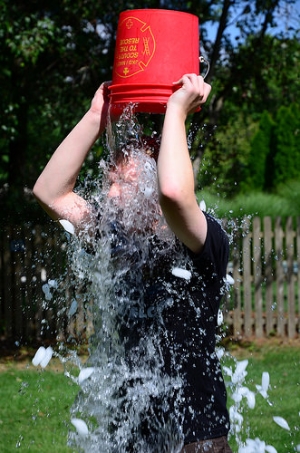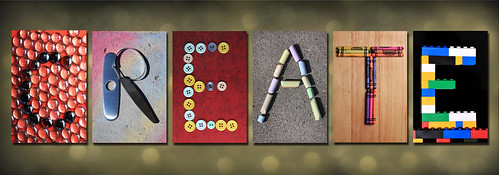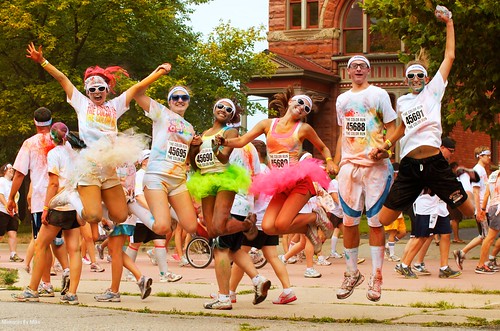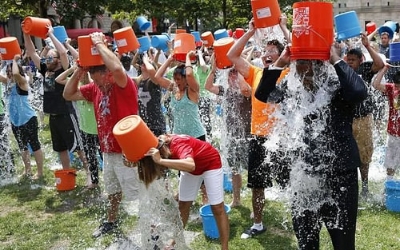Unless you’e been living under a rock, you’ll have noticed that another viral sensation has been dominating our social networking feeds lately: The Ice Bucket Challenge.
If you hadn’t heard of it (seriously, that must have been some big rock you were hiding under), the challenge aimed to raise awareness of ALS (or as it’s better known, Lou Gehrig’s disease) and raise money for funding research to find a cure.
All you had to do was film yourself pouring a bucket of freezing ice-cold water over your head and then nominating your friends to do the same… or donate $100 to charity.
From what I gathered, most people did both.
The idea behind the CTA was that the freezing water would imitate the numbness of feeling in those who suffer from the disease.
Some people hated it and condemned it as armchair activism, a fad, a waste of water, funding animal-testing or a scam.
Others, however, took to it like ducks take to water (pun very much intended).
But whatever your feelings about the viral sensation, you have to admit: It was everywhere.
And that got me thinking, what exactly about the Ice Bucket Challenge had people from either sides so passionately enthralled?
Because, in the end, isn’t the Ice Bucket Challenge just another type of marketing?
So, following in my nature to always figure out the hows, whys, whens, wheres, whats and whos of viral content, I felt the need to examine the Ice Bucket Challenge.
Because, in the end, learning from others success (and failures) is one of the most powerful learning tools that we have at our disposal.
1. Celebrity Endorsements are Still Effective…
… But ONLY if the Celebrity is Being Authentic.
We can’t ignore the fact that celebrities were integral into making the Ice Bucket Challenge such a phenomenal success.
But statistics have been indicating that ads containing celebrity endorsements are actually less effective than those without.
- In a study by Harris Interactive, 55% of respondents stated that celebrity endorsements could have a negative impact on a brand.
- In a Nielsen study, celebrity endorsements resonated with only 12% of consumers, and athlete endorsements even less so, with only 8%.
- Another study by Boston Consulting Group actually found that celebrity endorsements garner less trust from consumers than any other type of marketing.
That’s three different studies that indicated that celebrity endorsements don’t work.
So why, then, was everyone sharing the videos of celebs dunking cold water over their heads?
Because it was authentic.
Because studies have also indicated that the more genuinely connected a celebrity is with a particular brand or product, the more effective it will be.
And the more trustworthy celebrities are the more influential they are.
For example, Ellen Degeneres (who’s famous for her hard-hitting truths and take no prisoners attitude, powdered with humor and a funny dancing) was shown to have the biggest influence on consumers when she was featured in ads, according to an Ace Metrix study.
Why?
It’s likely because she’s demonstrated time and time again an unwillingness to support anything that she doesn’t genuinely appreciate (you remember her Bic Pens for Women spoof, right?)
Celebrities are also reported to be most influential when it came to a cause, with 27% of 18 – 36 year olds being influenced by them.
My conclusion? A celebrity has to be genuine, authentic, trustworthy and seem like they genuinely care about a product/goal/cause before they actually become effective brand ambassadors.
2. Video is a Really Powerful Content Marketing Tool
If you haven’t heard already: Video is the future of content marketing.
And the Ice Bucket Challenge has just proved exactly how powerful a tool it can actually be.
But don’t just believe me, the statistics speak for themselves:
In the interest of not repeating myself (and because it’s a topic deserving of more time and attention), check out “10 Video Content Marketing Examples from Up-and-Coming Start-ups” if you want to get some more information about video content marketing!
3. Make Your Content Social with User-Generated Content
People love to be social.
So when it comes to encouraging people to share,like or comment as part of the marketing strategy, it’s effective, it’s easy and it’s a great way to get people engaged in your company.
Of course, hosting competitions, creating interesting content, hosting webinars etc. are all great ways to encourage social sharing and conversations, but why not take it one step further with user-generated content?
When you encourage people to actually create content, you get them to engage on a deeper level. Creating content creates time, patience, understanding: It’s not just a simple click & forget.
Of course, it doesn’t have to be a video. It can be to create a poster, a mascot, a slogan or to share pictures of themselves using your product or service.
Check out these examples of User-Generated Content for more ideas and to see how effective it really is!
4. Keep it Positive
The Pringle and Field study proved that emotionally driven marketing is the most effective type of marketing (31%), outperforming both rationale (16%) and rationale-emotional (26%) marketing.
Not only that, but being positive has been proven as a more effective way to market products and services over being negative.
Jonah Berger and Katherine Milkman, professors at the University of Pennsylvania’s Wharton School, studied almost 7,000 articles in The New York Times and found that articles with happy emotions outdid those with sad ones.
But it’s hard to imagine being positive about certain issues which are really heavy and difficult to deal with.
However, the Ice Bucket Challenge did just this.
There was just the right amount of positive to negative ratio. The negative (or more aptly, serious) was the cause itself: The disease and what it entails. However, the actual action that people were encouraged to take was a positive one: Creating funny videos and encouraging awareness and charity.
5. Make Your CTA Easy, Fun & Free
A huge contributing factor to the success of the Ice Bucket Challenge was that it was easy to do: All you needed to have for the Ice Bucket Challenge was a bucket, water, ice and a recording device.
Most people could do it relatively easily.
Of course, donations were also encouraged, but not necessary.
Of course, theoretically, the Ice Bucket Challenge could have gone very wrong since it was either dump the water on your head or donate. Everyone could have opted out of donating and just poured the bucket of ice on their heads.
Luckily, this wasn’t the case with most people donating to charity and pouring the ice-water over their heads to raise awareness. In fact, the ALS Association reported a 1,000% spike in donations (yes, that’s a comma, not a full stop) to the national office. Between July 29 and August 7, donations jumped from their 2013 number of $14,500 to a whopping $160,000 in 2014.
Other Important Lessons from the Ice Bucket Challenge
The absolutely best thing about the digital age is that we literally have the power to come together and mould out what we want our futures, and the futures of our children and our grandchildren and our grandchildren’s children to look like.
We have the power to look at these viral videos and take them for what they are: Acts of kindness, of community, of real-people reaching out, of charity and of awareness.
In that spirit, here are 5 more lessons to match the 5 marketing ones that I’ve just named:
- Community
- Awareness
- Charity
- Kindness
- Outreach
In the end, we need to remember that the Ice Bucket Challenge wasn’t effective because of purposeful marketing.
It was effective because it encouraged the goodness in people to come out, while also sharing laughs and memories with each other. It was well-timed and it didn’t feel corporate or gimmicky.
Recreating a viral phenomenon like the Ice Bucket Challenge won’t work.
In fact, the vast majority of our content will never go viral.
For example, of all of Upworthy’s posts, only 5% of them have reached 100,000 and 0.3% of them have surpassed 1 million.
But it’s not all lost: Just because we can’t expect that imitating the Ice Bucket Challenge will generate the same enthusiasm again, doesn’t mean we can’t take some lessons from it!








